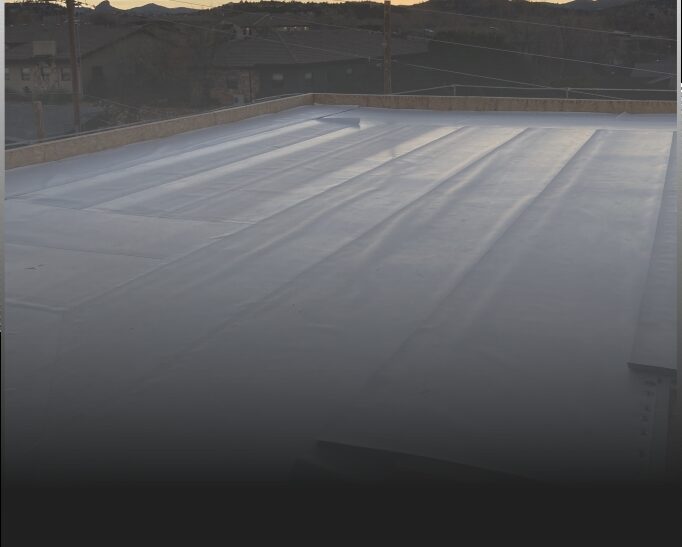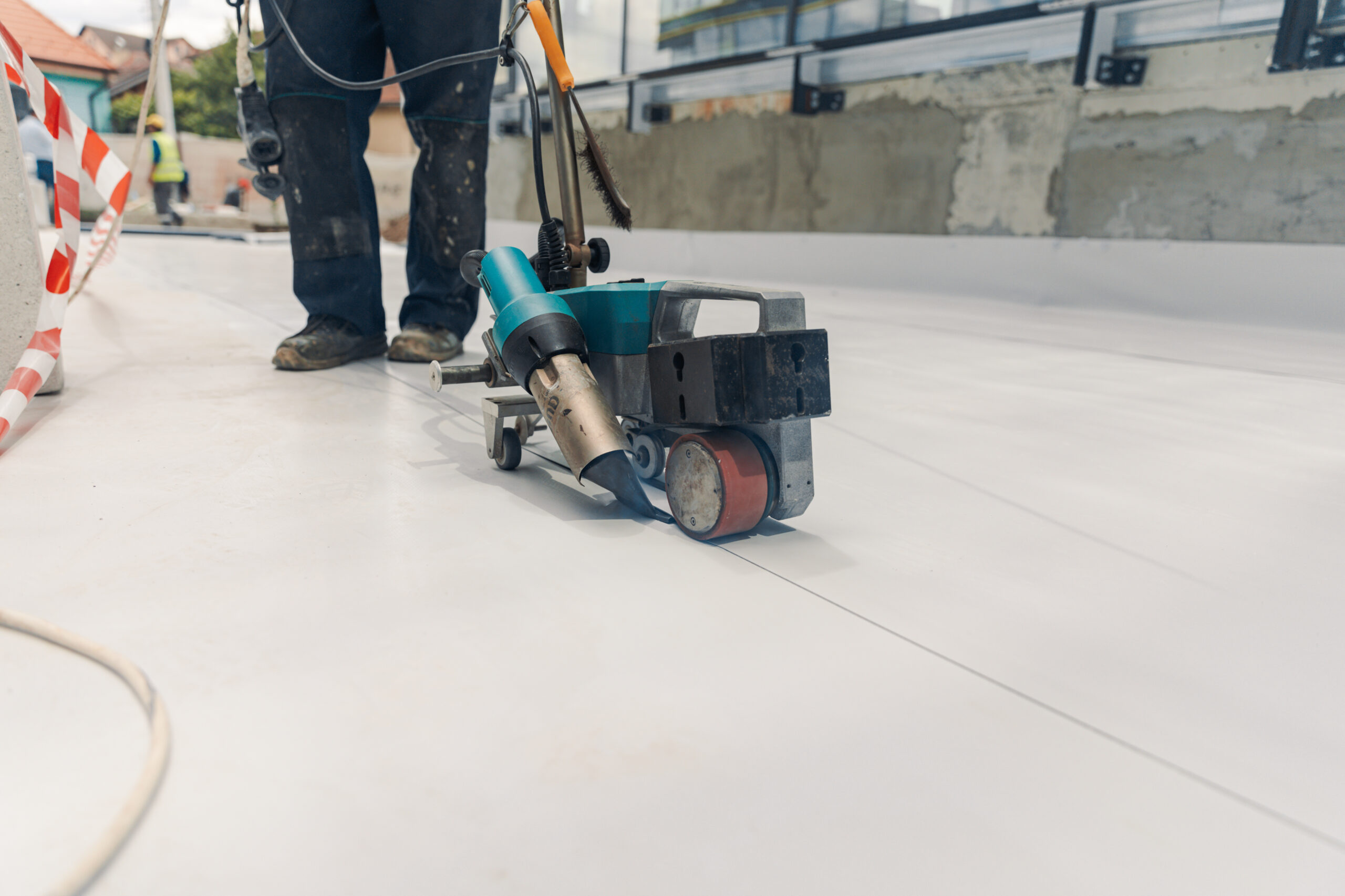TPO roofing systems have been around since the early 90’s, and it has grown in popularity to become one of the top roofing choices for commercial building owners and is even being used on residential low slope roofs today. Here in Arizona, TPO is a durable, reflective roof that is durable against the sunlight, heat, and UV rays, costs less than other roofing systems, and still has great warranties from manufacturers. It does well in all areas of Arizona, from Tucson and Phoenix to the mountain regions of Prescott and Flagstaff.
ABOUT TPO
TPO is a single-ply membrane roofing system, typically installed over insulation board like polyiso, taper board if needed, and then a coverboard to protect the insulation and gives a smooth surface for the membrane. The insulation board adds R-value to your ceiling and roof insulation ratings, and is required by current energy code depending on your climate zone. Combining the high reflectivity of the TPO membrane with the insulation board gives roofs in Arizona the best possible energy efficiency across the board, with the many days of sunlight we experience here.

THE TPO ROOFING SYSTEM IN ARIZONA

LIFESPAN AND WARRANTIES
ABOUT M&M ROOFING
M&M Roofing has been installing low slope roof systems across Arizona since 1984 and TPO from it’s early days. We service the entire state, including Tucson, the Phoenix metro (Queen Creek, Gilbert, Chandler, Phoenix, Tempe, Scottsdale, Glendale, Goodyear, Avondale, Peoria and outlying areas), Prescott, Flagstaff, Kingman, and everywhere in between. Give us a call to schedule a free consultation.

